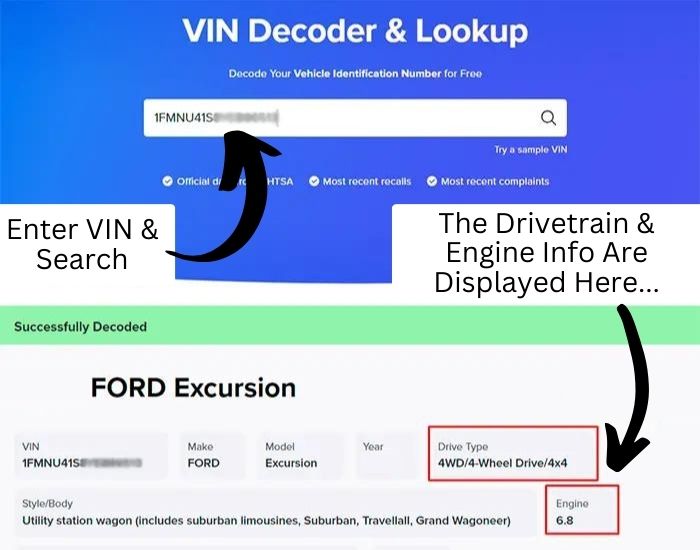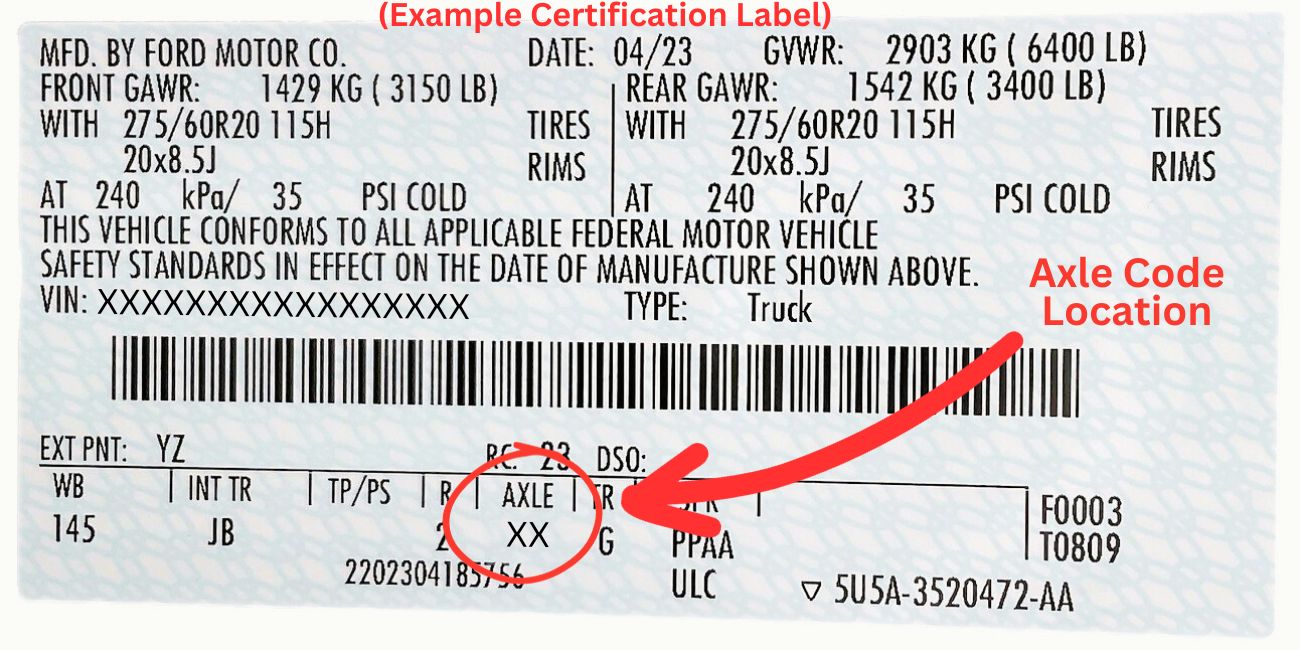Figuring out the towing capacity of your 2004 Ford Excursion is not as simple as looking at a chart and saying, "This is it!" It actually involves understanding three specific attributes about your SUV and this guide will help you not only discover what these important details are, but also show you how and where to locate them.
2004 Ford Excursion Towing Chart: A Closer Look
Take a look at this towing chart specifically designed for the 2004 Ford Excursion that has been meticulously put together using data directly sourced from Ford's official Towing Guide.
As you look through the chart, you'll notice the three important variables I mentioned earlier and these variables, which includes the type of engine that's equipped in your Excursion, whether it's a 2WD or 4WD model, and the axle ratio, are crucial in determining your towing capacity.

2004 Ford Excursion Towing Capacity Breakdown By Engine:
If you take a closer look at the chart, you'll find that the capacity ratings change, based a lot on the engine that was equipped, so let's examine the data and compare the results to see the advantages of each engine.
- The 5.4L (V8) engine has a towing capacity of 6,100-7,600 lbs for the 2WD models, and the 4WD models can tow up to 7,200 lbs.
- If you had the 6.8L (V10) engine equipped, you'll see a bump in the towing capacity of 10,000-11,000 lbs. for 2WD models and 9,600-11,000 lbs. for 4WD models.
- The 6.0L (Diesel) engine offers the best towing capacity, a consistent 11,000 lbs. for both 2WD and 4WD models.
Three Things You Need to Know About Your Excursion To Get Your Towing Capacity:
In order to get your capacity rating from the chart for your Excursion, all you need to know are three important things about your SUV...
- The engine you have equipped
- If you have a 2WD or 4WD model
- The axle ratio
Figuring Out Your Equipped Engine, Drivetrain (2WD or 4WD) and Axle Ratio...
Having these three essential pieces of information should give you your tow rating, when plugging them into the chart, but finding out where to find these details can be a tad trickier than you might expect. That's why the next part of the article will provide a more detailed explanation on where to find these pieces of information.
Engine & Drivetrain Options:
Discovering the engine and drivetrain configuration of your SUV is a breeze! All you have to do is input your vehicle's VIN into an online VIN decoder (shown in image below), and it will provide you with the engine that is equipped and whether it's a 2WD or 4WD setup, that's it!
This straightforward process will give you two of the three details you're after, making it incredibly convenient and fast!


Axle Ratio Options:
Determining the axle ratio for older vehicles, like these SUVs, might pose a slight challenge, but with the right knowledge of where to search, it's not overly complicated, but it may require a bit more time and resources on your end.
Option 1: Look for Your Certification Label
Most cars, including your SUV, have a certification label that contains a wealth of valuable information, including axle ratio information, in some cases. Ford vehicles, in particular, often have an "axle code" printed towards the bottom of this label, which will provide you with important details about the axle ratio.
Label Location & Axle Code: The certification label is usually located on the driver's side door or somewhere along the pillar, on that same side. The label will (somewhat) resemble the image I have posted below and I want you to pay attention to where the word "AXLE" is located and the code below it. Once you have that "axle code", you will have to decipher it and you'll be able to determine your axle ratio.

Ford usually provides a table to decipher these "axle codes", but these aren't always available for certain older vehicle models, like the 04 Excursion. In this case, you'll have to decode the "axle code" yourself, using the internet to aid you in the process.
If the axle code is not visible on your certification label or if the label is missing or severely faded, you will need to take a different approach (options 2 and 3).
Option 2: Take a Look for Yourself
If you're up for the challenge, you can figure out the axle ratio by physically inspecting the rear axle housing and locating a metal tag that is mounted to it somewhere. Just keep in mind that this approach requires a certain level of mechanical knowledge and a willingness to climb under your SUV, so it may not be suitable for everyone.
If you come across this metal tag, it will show the axle ratio and other information that is stamped onto it.
For reference, the picture below shows what one of these tags looks like when it is taken off the vehicle and for this particular example, the tag indicates a 3.73 ratio, and the "L" in the middle tells us that it is a Limited Slip type of axle. This information is not important for what we are currently doing though and should be ignored if you have something similar.

Option 3: Get Some Help
If you're unsure about the axle ratio of your vehicle, another option would be to visit a dealership or mechanic and ask them if they can assist you. This shouldn't be too hard for them and they can more than likely find the axle ratio for you.
3 Different Hitches & Their Weight Limits:
The weight restrictions and overall towing capacity are greatly influenced by the type of hitch you have when it comes to towing and for the 04 Excursion, there are three common types of hitches that are used: a bumper hitch, a frame-mounted receiver hitch, and a weight distributing hitch.
- Bumper Hitch: A bumper hitch is the simplest hitch out of the tree options and is just a ball that is securely screwed into the back bumper of the vehicle. The trailer is then connected to this ball, right at the bumper and if we look at the chart, it can handle a maximum weight of 5,000 pounds.
- Hitch Receiver: The preferred option for many people who install a hitch is to attach a hitch receiver to their vehicle's frame, which are usually bolted to the frame, using strong bolts. This type of hitch is widely used and offers a reliable connection that can endure significant pressure.
It's worth noting, though, that the maximum rating on the chart for these hitches is only good for up to 5,000 pounds and if you need to achieve those higher ratings that were specified in the chart, you'll need to use a weight distributing hitch, with your hitch receiver. - Weight Distributing Hitch: In order to be able to obtain the highest ratings depicted on the chart, it is necessary to use a weight distributing system (alongside a hitch receiver) to evenly distribute the weight of the trailer. This ensures trailer stability and enables you to pull heavier loads with your SUV. Ford requires the use of a weight distributing hitch for loads that exceed 5,000 pounds.

In order to ensure the accuracy and reliability of the information found in this article, I made sure to gather data from credible sources. These sources, include the 2004 Ford Towing Guide and the owner's manual, which I recommend you checking out for yourself, to get a better idea of your SUV's capabilities and limitations.
